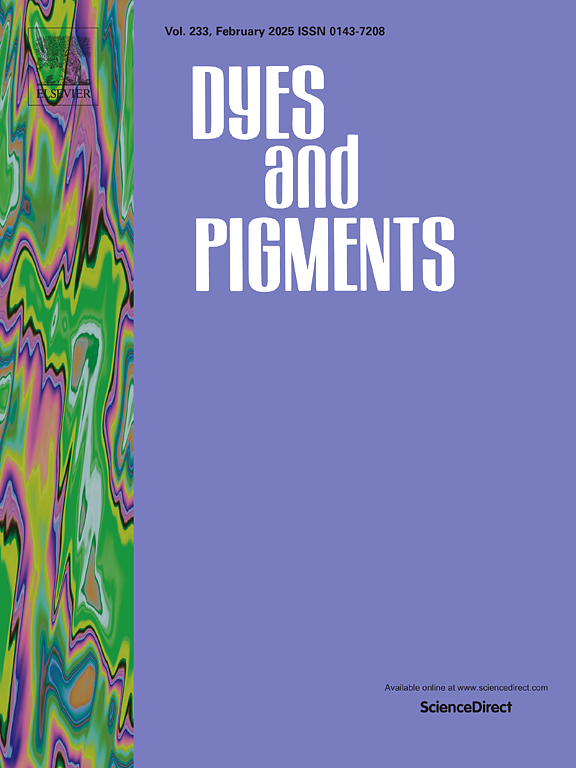Study on the correlations between dynamic dye and structural colors
IF 4.1
3区 工程技术
Q2 CHEMISTRY, APPLIED
引用次数: 0
Abstract
In nature, many creatures, such as lizards and octopuses, have the remarkable ability to exhibit color changes by precisely locating different types of chromatophores, which contain both pigment cells and iridophores. Though the evolution of structural coloration and pigments in some animals has been explored, there is a critical gap between the natural skin color and the biomimicry color. In this work, we designed smart artificial skins that can produce extensive color by incorporating physical color and chemical colors together, similar to the integumentary structure of lizards. The mechanochromic hydrogel films embedded with colloidal crystals provide a dynamic structural color background, and the dyes entrapped in the hydrogels tune the composite color precisely. The composite color was computed by Grassmann's law and further quantitatively analyzed by the RGB and HSB color spaces. The computed results agree reasonably well with the experimental results. Thus, precise colors that are difficult to produce by only structural colors or dyes can be achieved by theoretical calculation. Furthermore, films with more realistic color are achieved by incorporating pH-responsive dye with tunable structural color, similar to the color-changing mechanism of lizards. This work may open a new strategy for preparing color-displaying devices with outstanding performance.

求助全文
约1分钟内获得全文
求助全文
来源期刊

Dyes and Pigments
工程技术-材料科学:纺织
CiteScore
8.20
自引率
13.30%
发文量
933
审稿时长
33 days
期刊介绍:
Dyes and Pigments covers the scientific and technical aspects of the chemistry and physics of dyes, pigments and their intermediates. Emphasis is placed on the properties of the colouring matters themselves rather than on their applications or the system in which they may be applied.
Thus the journal accepts research and review papers on the synthesis of dyes, pigments and intermediates, their physical or chemical properties, e.g. spectroscopic, surface, solution or solid state characteristics, the physical aspects of their preparation, e.g. precipitation, nucleation and growth, crystal formation, liquid crystalline characteristics, their photochemical, ecological or biological properties and the relationship between colour and chemical constitution. However, papers are considered which deal with the more fundamental aspects of colourant application and of the interactions of colourants with substrates or media.
The journal will interest a wide variety of workers in a range of disciplines whose work involves dyes, pigments and their intermediates, and provides a platform for investigators with common interests but diverse fields of activity such as cosmetics, reprographics, dye and pigment synthesis, medical research, polymers, etc.
 求助内容:
求助内容: 应助结果提醒方式:
应助结果提醒方式:


